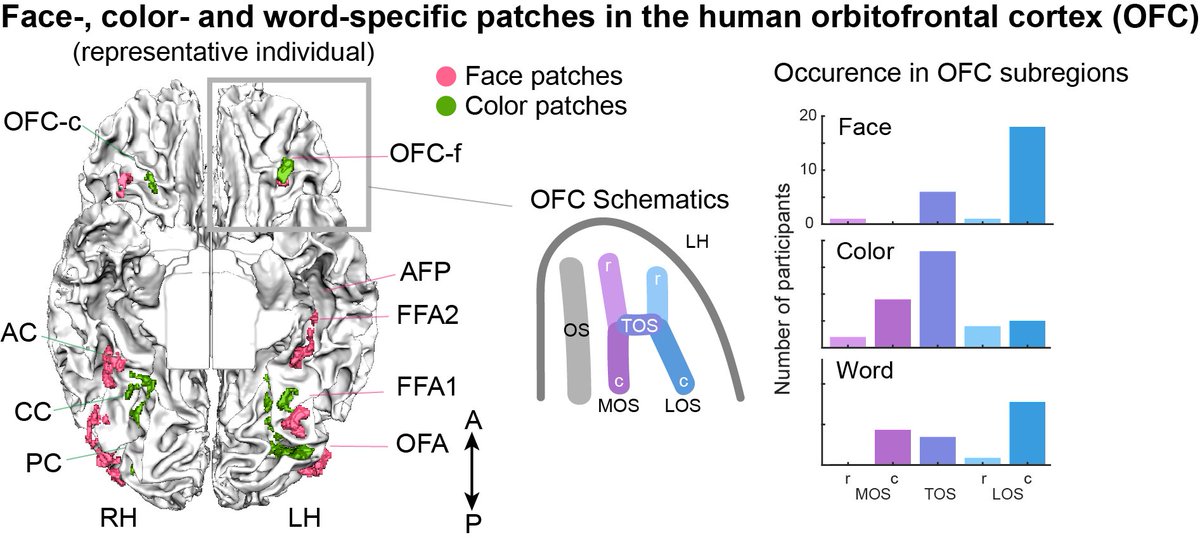
Jianghao Liu
@jianghao_liu_
Followers
245
Following
261
Media
50
Statuses
217
Cognitive neuroscience of visual mental imagery, aphantasia and consciousness.
Paris, France
Joined January 2019
(1/9) Thrilled to share our new preprint🧠Using 7T fMRI, we report the presence of face-, color- and word-specific patches in the human #orbitofrontal cortex (OFC), which form continuous functional gradients with VOTC patches.
1
8
26
Does aphantasia have unconscious imagery? .Thrilled to annonce our new paper out on @CurrentBiology .
We provided three criteria following the current definition of unconscious imagery by @BenceNanay, and examined the emerging neuroimaging evidence on aphantasia.
0
0
5
A follow-up 7T fMRI study on face- and colour-processing systems in aphantasia revealed normal ventral temporal activity. see 🧵.
(1/5)Category-specific visual processing in #aphantasia? .Using 7T fMRI, we systematically examined face and color patches and found that aphantasics have normal activity in the VOTC visual cortex, but deficits in (top-down) OFC activity.
1
0
1
Aphantasia has a higher activation of the #ventralAttentionNetwork in both imagery and perception (connected with the left imagery network), this aberrant activation might heighten susceptibility to external interference, potentially either destabilizing or suppressing imagery.
1
0
0
Critically, the FIN was functionally disconnected with the left anterior PFC across domains, and with left FEF for some domains. This is highly potentially related to visual #awareness of internally generated experience in aphantasia (see above TICS letter).
1
0
0
🚨Out in @TrendsCognSci, ."Aphantasia as a functional disconnection"!.A disconnection between the Fusiform Imagery Node (FIN) & the left PFC may explain retained memory for objects, despite lacking subjective imagery in aphantasics. left PFC, awareness, abnormal attention. 🧵
1
4
21
Impressive study! The fusiform imagery mode (FIN) is disconnected in acquired aphantasia!.
Can brain injury cause the loss of visual imagination? . We studied #aphantasia due to brain injury. Lesions were in many different regions but 100% were connected to fusiform imagery node - a region active during visual mental imagery @Brain_Circuits .
0
1
5
RT @TomerUllman: Out now in TiCS, a thing i've been thinking about a lot: . "Physics vs. graphics as an organizing dichotomy in cognition"….
0
17
0
RT @GretaTuckute: What are the organizing dimensions of language processing?. We show that voxel responses are organized along 2 main axes:….
0
40
0
(4/5) During imagery maintenance period, aphantasics showed reduced activity in the #OFC, but not in any areas of the visual cortex. (Could this be related to a "only flash of imagery" experienced by some aphantasics?🤔
1
0
1
(3/5) However, there are #three group differences. 1. although aphantasics encoded stimulus content during imagery, these representations differed from those elicited by perception. 2. aphantasics exhibited reduced connectivity between the OFC and anterior visual areas.
1
0
1
(1/5)Category-specific visual processing in #aphantasia? .Using 7T fMRI, we systematically examined face and color patches and found that aphantasics have normal activity in the VOTC visual cortex, but deficits in (top-down) OFC activity.
1
0
2














